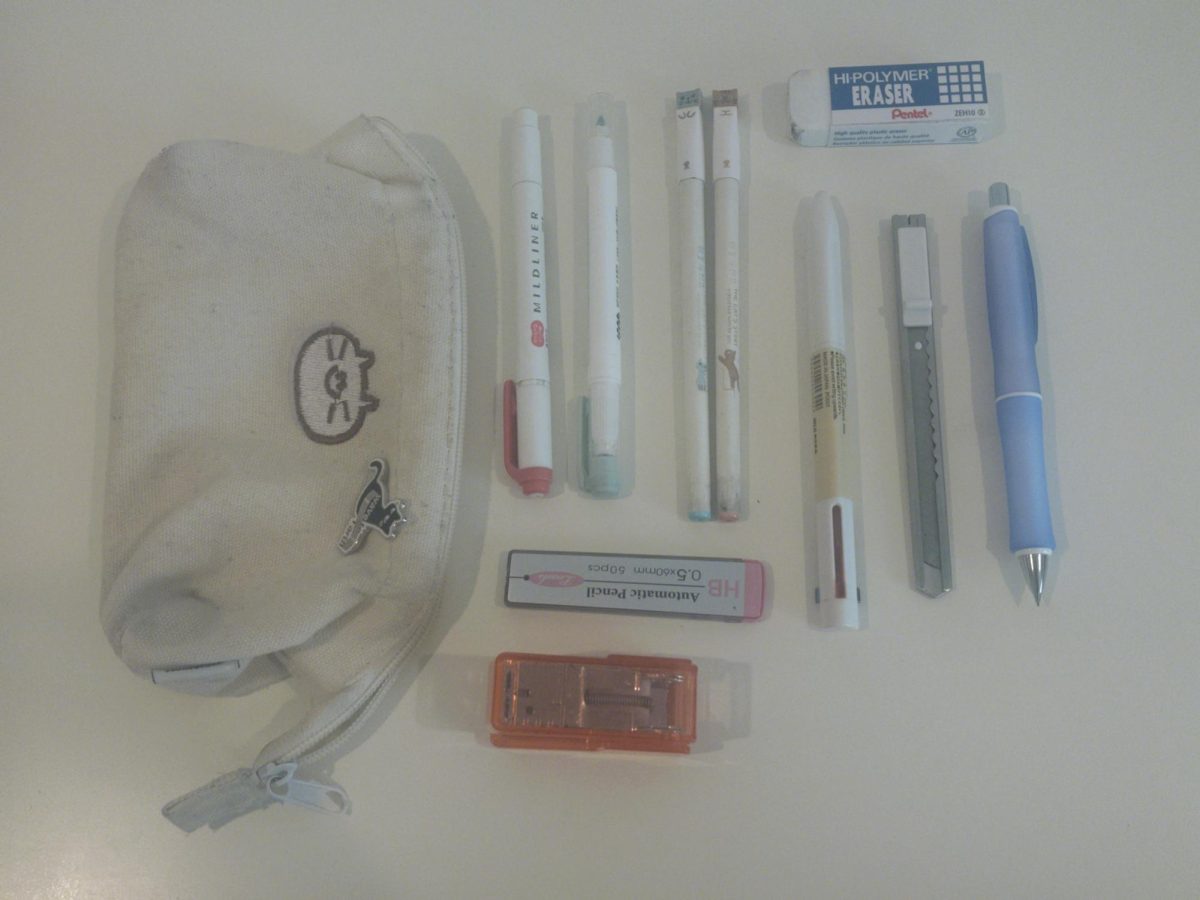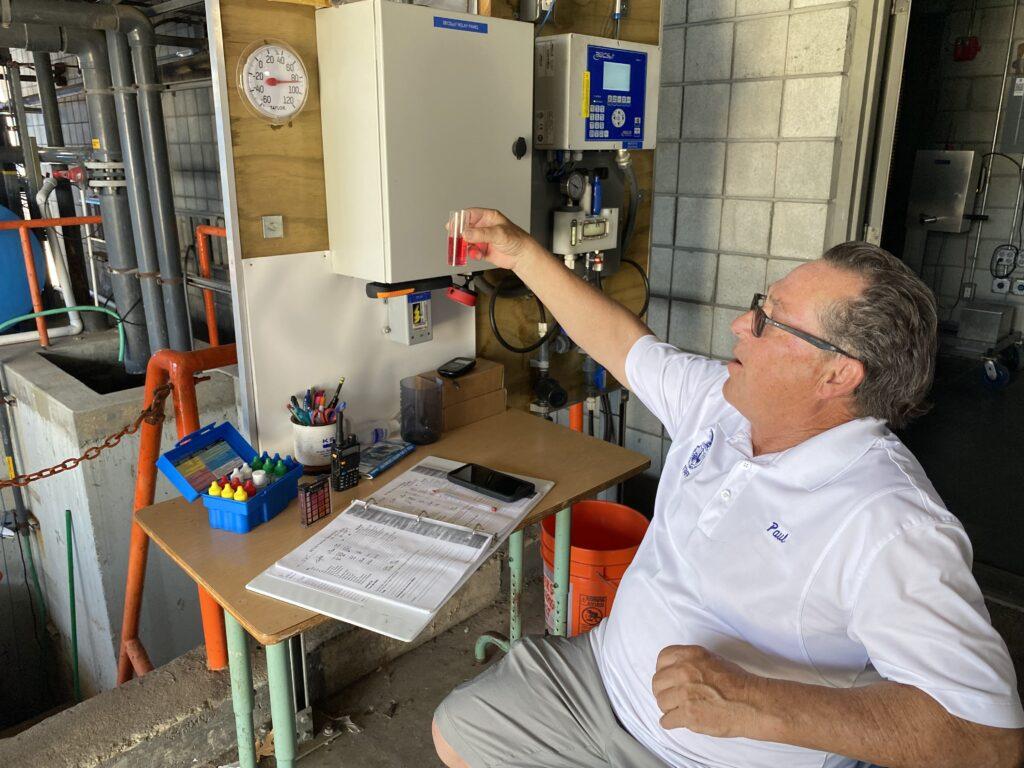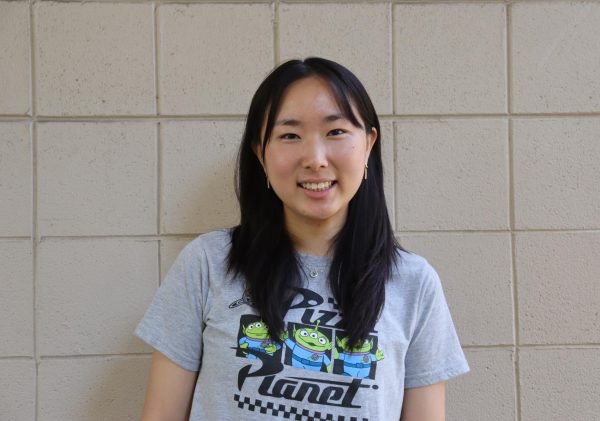On a Saturday evening in April, a steady stream of 20 to 30 people, ranging from high school track athletes to elderly joggers, were walking or running in the school track and field area. Composed of the Benny Pierce Football Field with its massive expanse of gleaming turf encircled by a spotless red and white track, the school’s track and field area attracts hundreds of students and community members every day.
Given the frequent use of the space, it’s a big job to keep it clean and well maintained. That task falls to the school’s maintenance workers.“We take great care of this campus,” maintenance supervisor Paul Weir said. “It’s clean, functional and at the university level [even though] I have a very small staff.”
Since the last refurbishment of the track and field in 2011, it has gone through much wear and tear. The district is planning a multi-million dollar project this summer to repair and renew the track surface as well as replace the football field’s aging turf.
Damage to track and field demands constant care
Due to overuse and heavy rainstorms in the past couple of years, cracks are starting to form on the surface of the track — natural wear and tear that means the surface must be redone every few years.
Additionally, about a month ago, an unknown person damaged two long jump take-off boards near the sandpit by pulling them up with what Weir and his team speculate may have been a hammer. The maintenance staff needed to replace the damaged boards with two handmade ones.
“Our maintenance is just ongoing,” Weir said. “There is no rest. It’s like emptying the garbage can at your house. It’s empty, but you [end up filling] it immediately. The next day you’ve got to empty it again. We’re in the same cycle.”
Their maintenance stretches beyond just the track, however. Instead of having natural grass, the football field was converted to a turf field in 2008. Compared to natural grass — which Weir says requires “an awful lot of maintenance” such as moving, fertilizing, watering and painting lines — the turf is much more sustainable. However, some inconveniences such as dogs urinating on the turf have made it difficult to manage. Unlike permeable natural grass, artificial turf offers less effective drains, meaning pools of urine left behind by dog owners must be sanitized by the maintenance crew.
Aside from the dogs, the football field also has a goose problem. Over the last couple of years, a family of Canadian Geese has made the school their home, and according to Weir, their family is still growing. The geese disrupt the flow of activity on the track and field, often leaving unwanted feces.
“They are not afraid of us and the 1,000 students [at this school],” Weir said. “We’re not mean to them and we don’t scream at them. The geese have just decided, ‘we don’t need to migrate any further than Saratoga High.’”
The turf has also suffered a huge dip in its surface due to this year’s unusually heavy rainstorms. The excessive rainwater weighed down the soil and caused it to compact, creating a dent across the field. Along with the uneven surface, the turf didn’t pass the most recent GMAX test conducted in June 2022, which measures the ability of a playing surface to absorb shock or kinetic energy from a collision. When athletes collide with the turf, they face increased risk for injuries such as concussions.
The district plans to replace the damaged turf in their renovation project this summer.
The pool calls for daily chemical checks
Just like the track area, the swimming pool, which holds approximately 800,000 gallons of water, needs daily maintenance. Around 70 to 80 swimmers — from the school swim team and outside organizations such as De Anza Cupertino Aquatics (DACA) that rent the pool — use the school swimming pool daily, causing frequent changes in the water’s chemical balance due to pH being affected by swimmers’ skin, hair and lotion.
Due to this acidic imbalance, Weir and his team, along with external professional pool technicians, must frequently test the pool’s key water condition indicators — such as pH, alkalinity, temperature and flow rate — two times a day, every day of the week. The first of the two daily check-ins can occur as early as 4:30 a.m. Weir and his team use a log that keeps track of the chemical checks.
“People here have 15 to 20 years of experience so they know what to do,” Weir said. “[Our maintenance] is why the pool isn’t green; it’s why the pool isn’t dirty and why it’s ready for our swimmers.”
Due to safety hazard, tennis court calls for minor change
Like the pool, the school’s tennis courts are often rented out to outside organizations. Weir and his team ensure that the facilities are clean for students and the renters.
In April, a student tripped over a ledge in front of the tennis court entrance, a problem Weir’s team has determined to be a safety hazard.
“Now our job is to jackhammer [the ledge] out, and we’re going to jackhammer it down below the surface and smooth it with concrete,” he said.
Students’ role in keeping their environment clean
Weir and his team work a collective total of 80 to 120 hours weekly on the school’s facilities, and they expect students to aid them in keeping the campus and its athletic facilities clean. For example, he pointed out a cluster of tables between the storage room and the upper field where groups of students eat lunch and often leave bags, milk containers and orange juice cartons behind on the table.
“I will tell them the next day, ‘I saw you sitting here and you just got up and left your garbage, can you please clean up after yourselves?’” Weir said.
Weir recalls that the trash was picked up by the students the following day. Though he appreciates their responsiveness and help, he still hopes that students as a whole are aware of the hard work maintenance workers put into keeping the campus clean.
“We are people, not machines,” Weir said. “I’d like the students to know how hard we work, how professional we are and how seriously we take the condition of this campus. Looking at some other school campuses, [SHS students should feel] very fortunate to go to this school.”




























